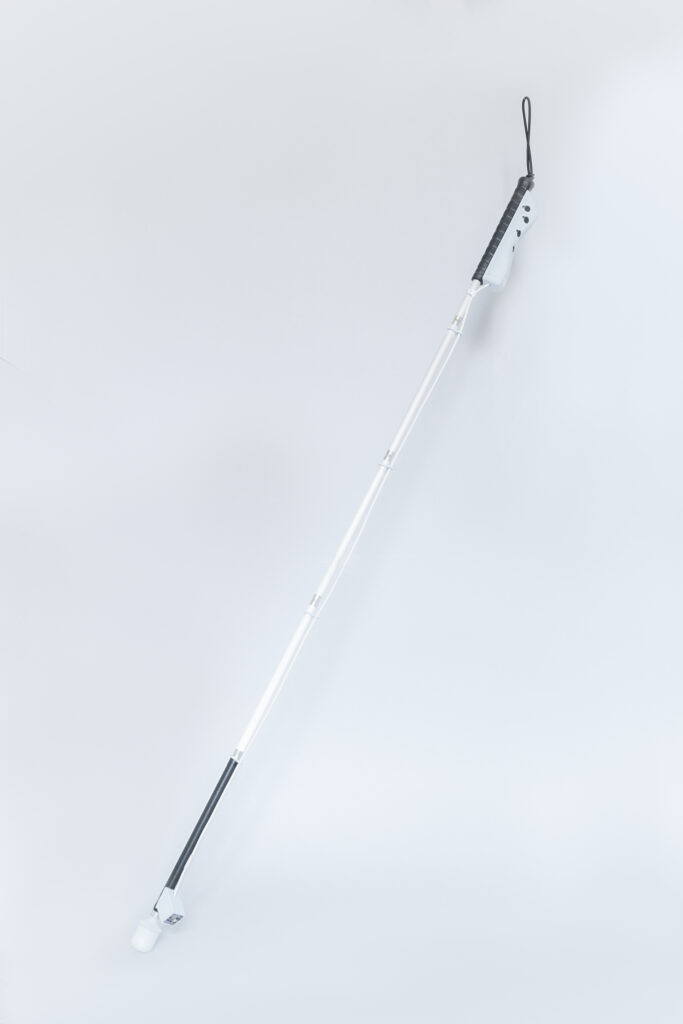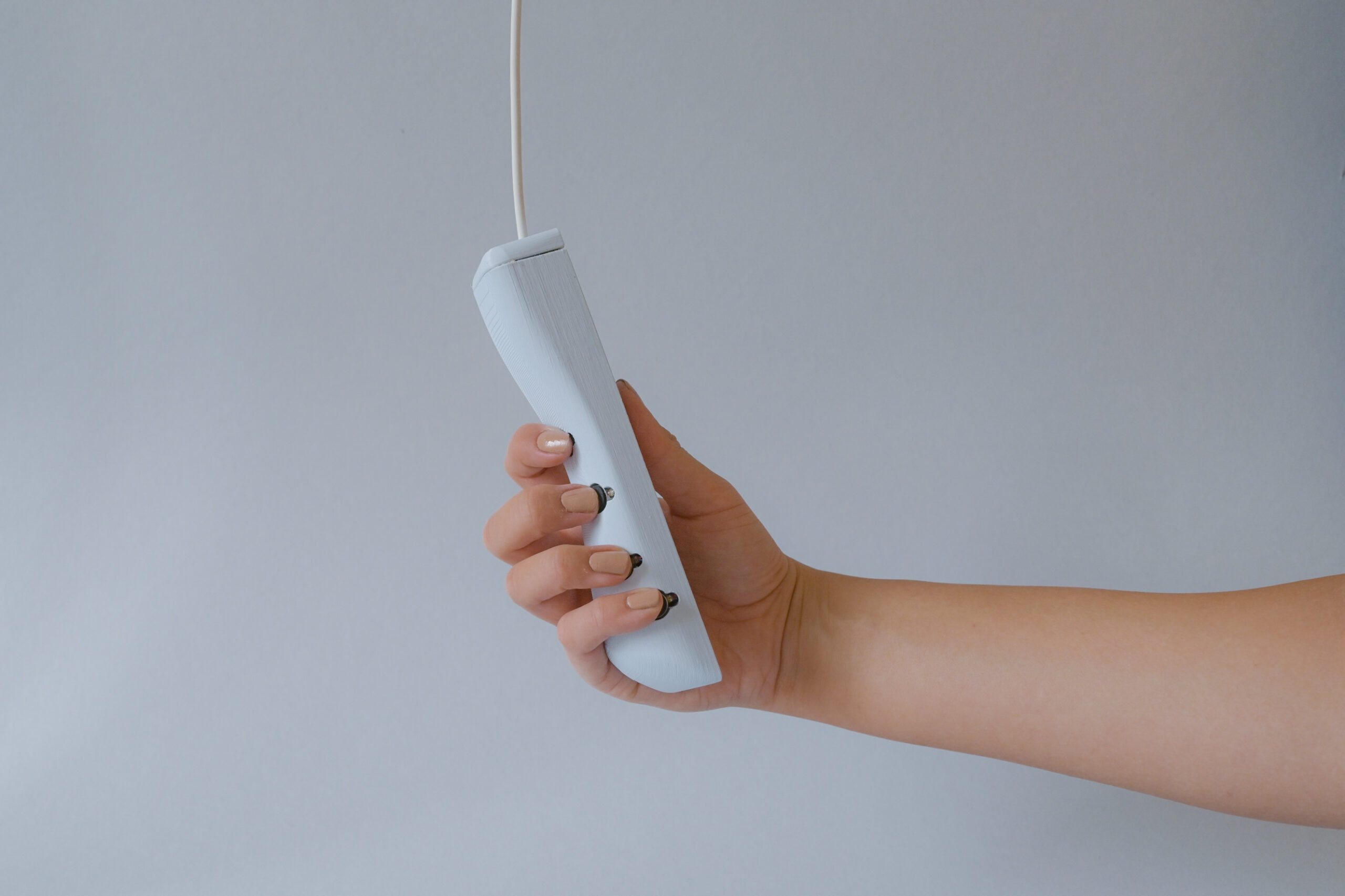The blind cane is one of the most recognised aids for the blind or visually impaired (b./v.i.). It helps navigate through daily life and acts as a safety precaution for the user. However well functioning it has proven itself, not much has been further developed since its invention. If a design works well, it should not mean it can’t be improved over time, especially once new circumstances, needs and demands arise that require new features.
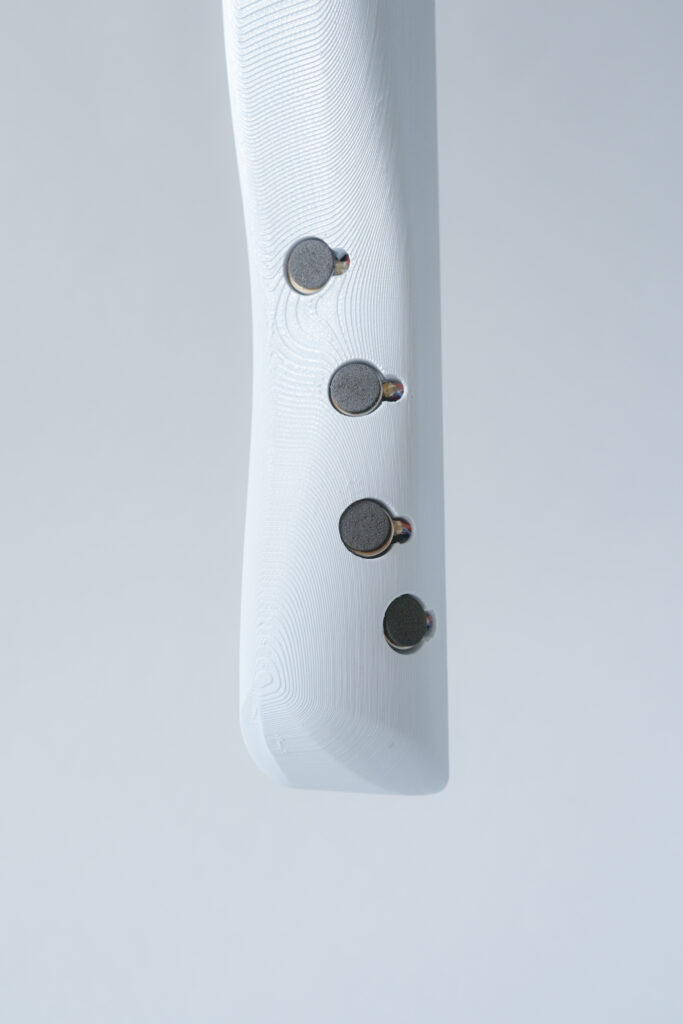
In times of the current crisis, where keeping distance is essential and human interaction very limited, it can be especially difficult for the b./v.i. to navigate in public space and abide by the new guidelines (which have, in their conception and development, not accounted for the disabled).
Initially, the intent was to design and prototype a simple device that would recognise the coloured ground markings to measure 1,5 -2m distance and consequently give haptic feedback via a vibration motor.

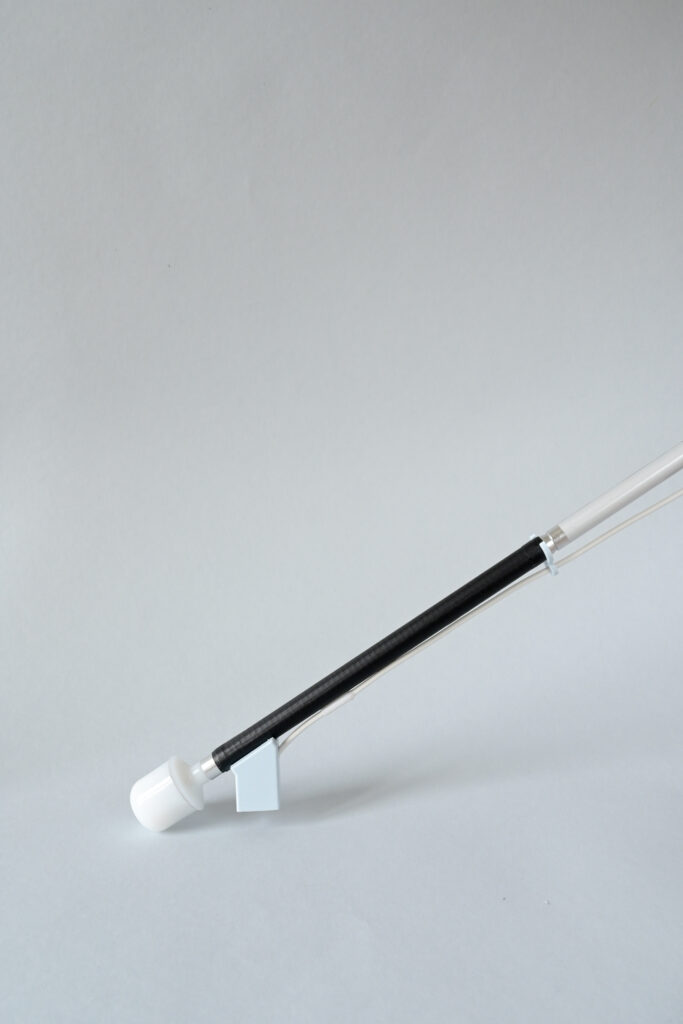
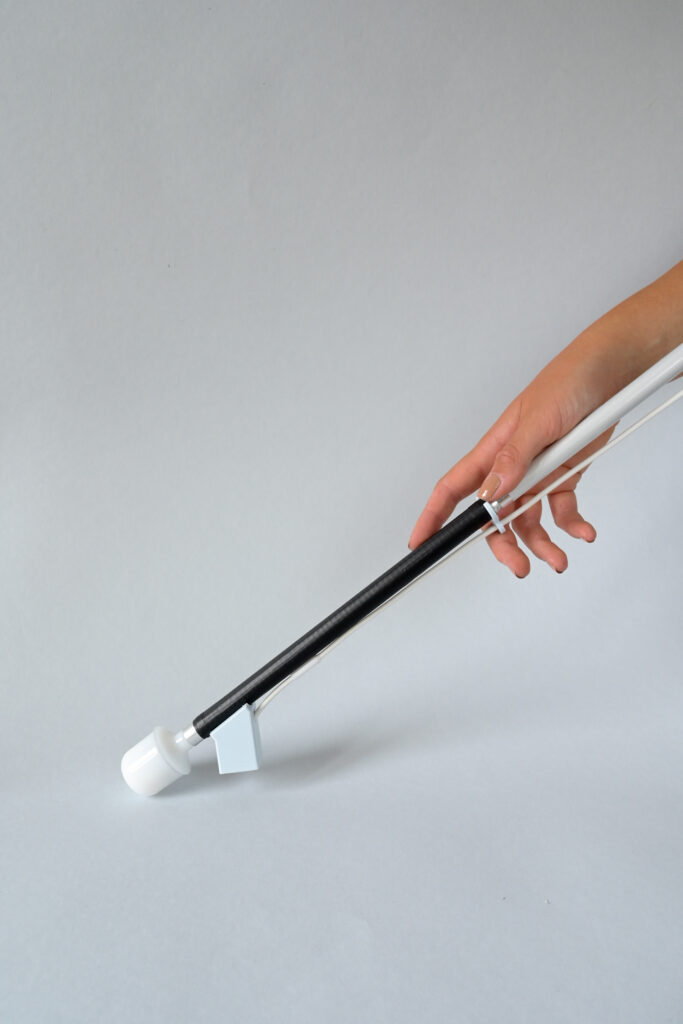
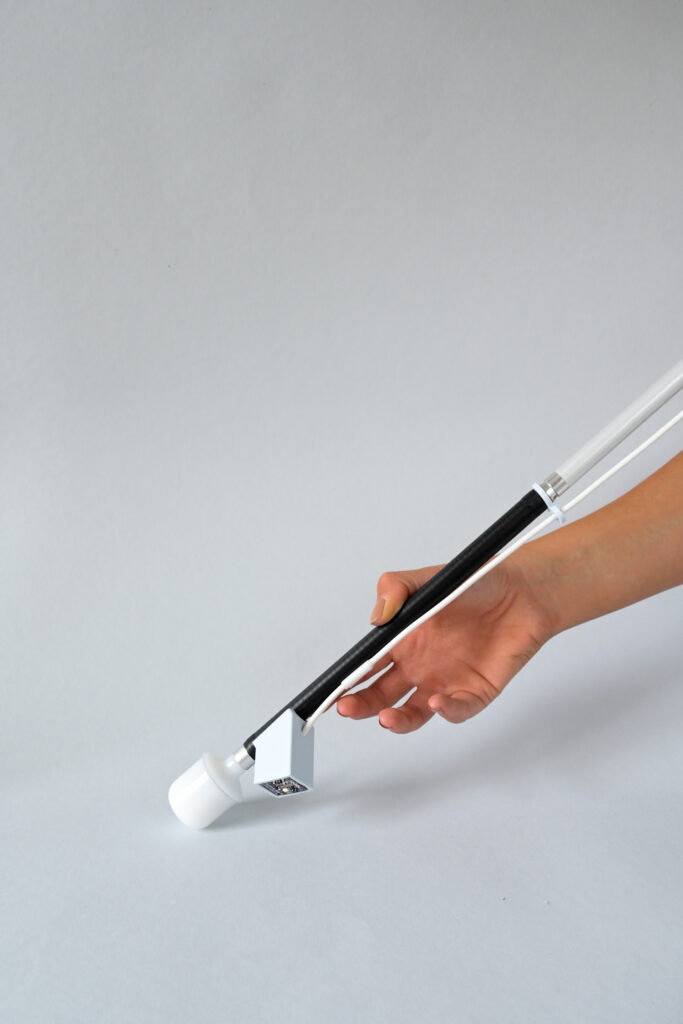
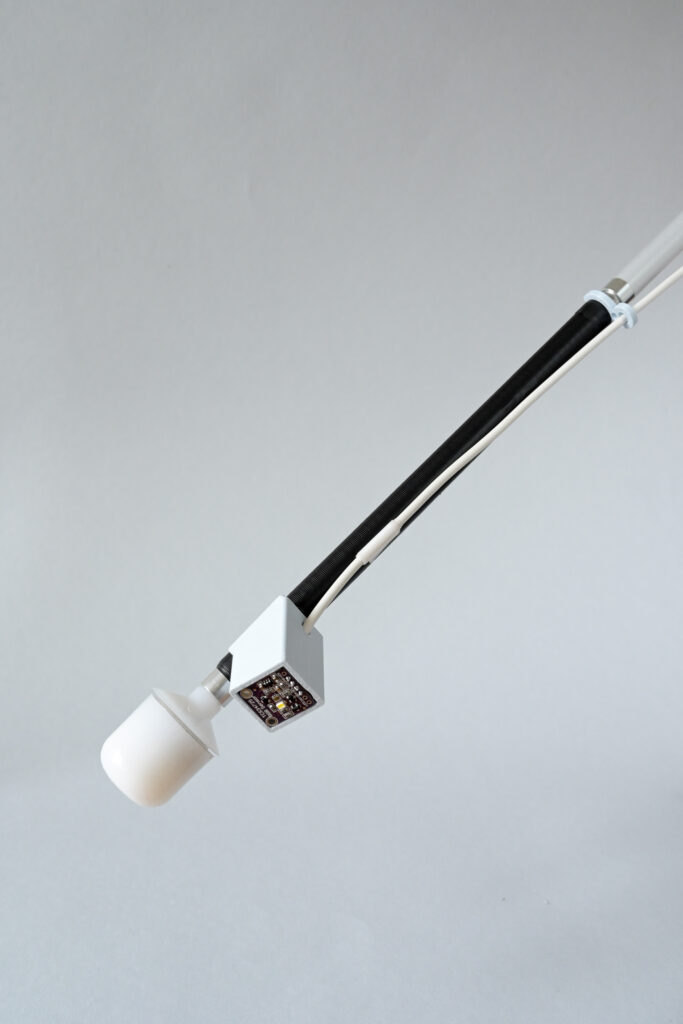
The design was created as a detachable device (benefiting a variety of blind cane models in their universal design) to possibly expand its use into other areas of daily life e.g. in private spaces.
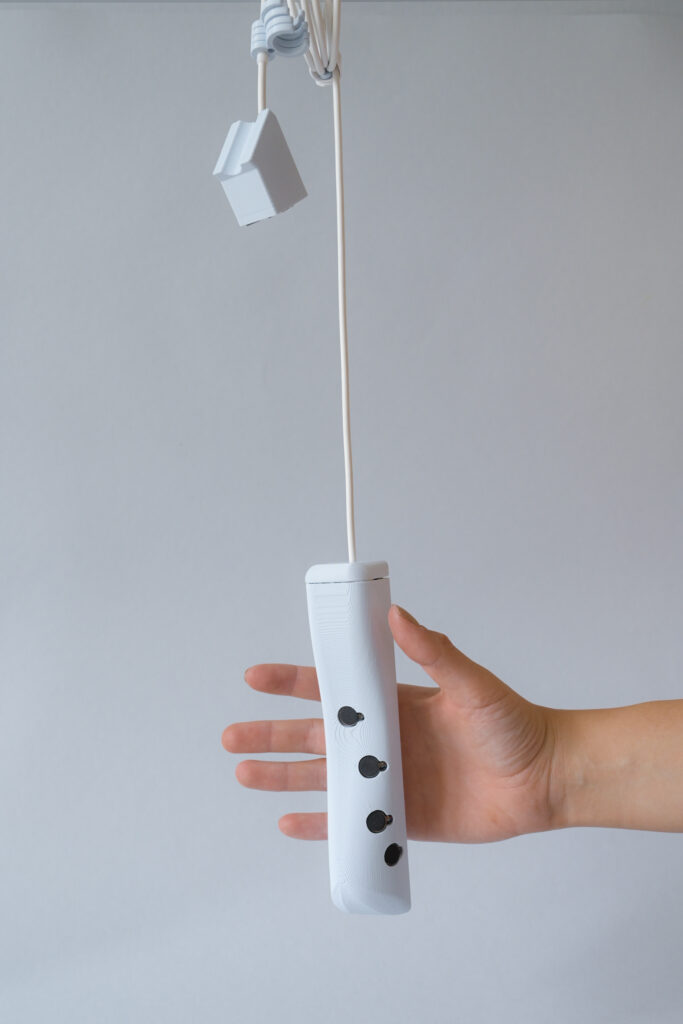
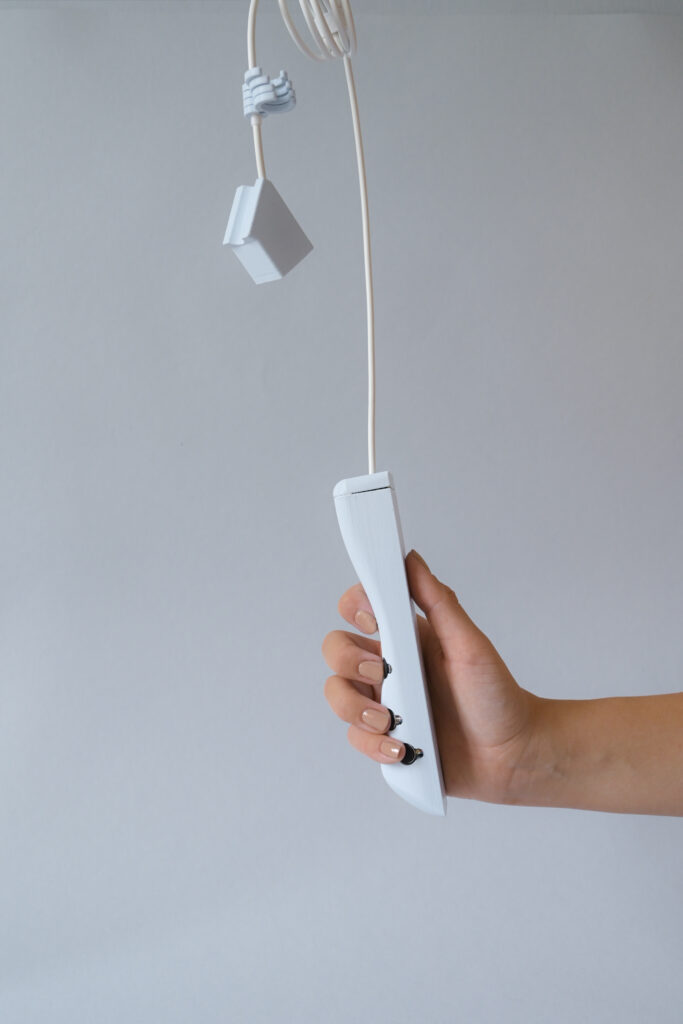
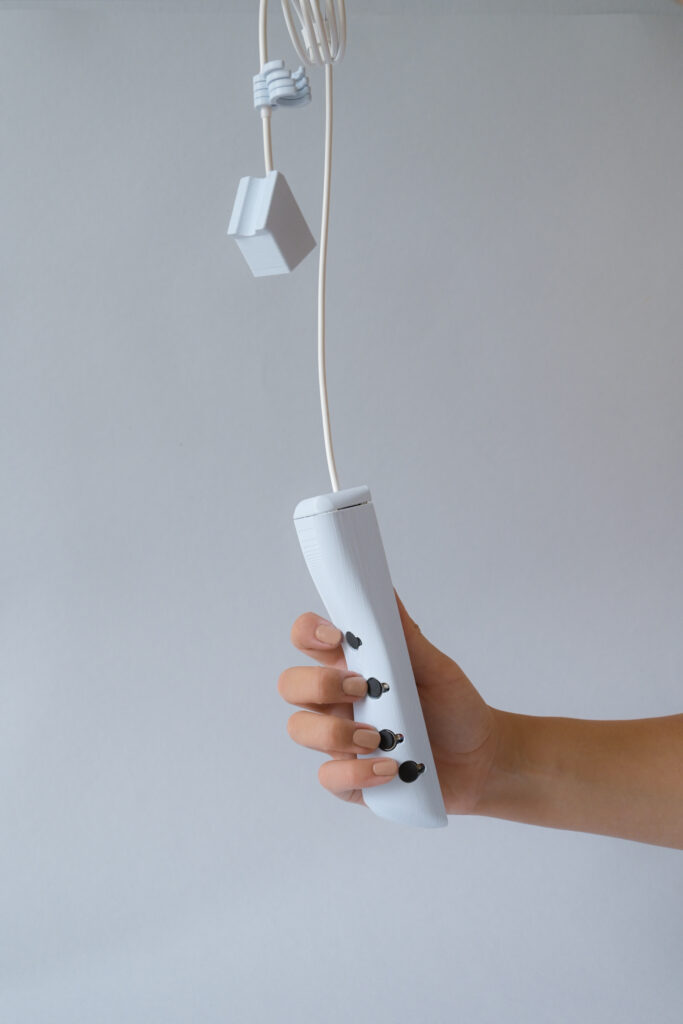
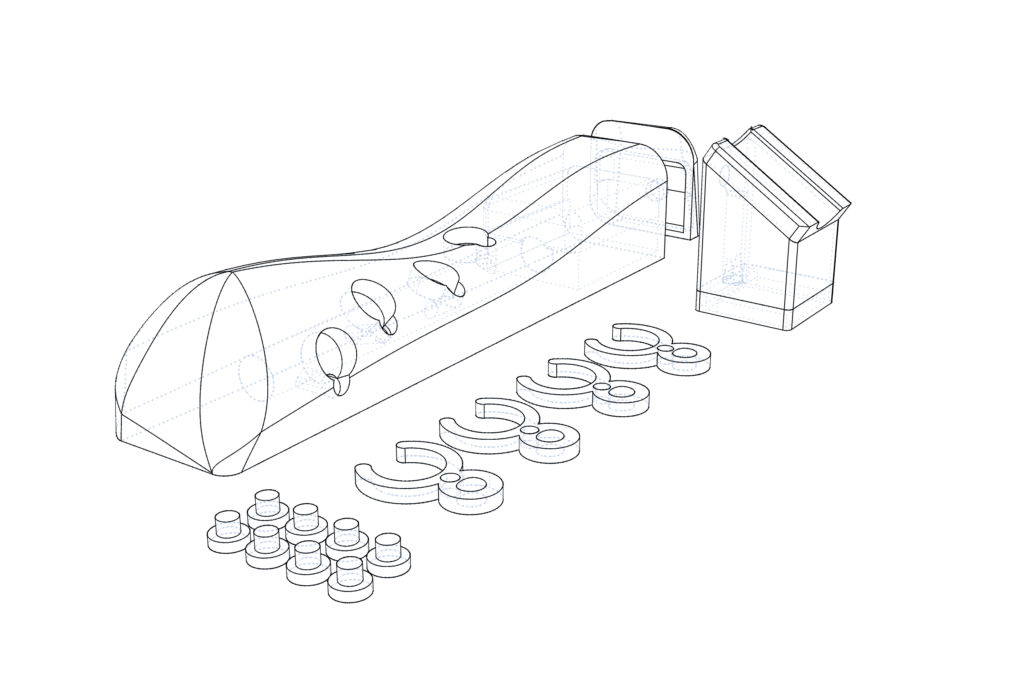
An ergonomic handle with cutouts for the vibration motors – hollowed on the inside to make space for cables, battery and the arduino board- an angled enclosure for the RGB sensor as well as clips to fasten the cable to any cane were 3D-modeled and printed.
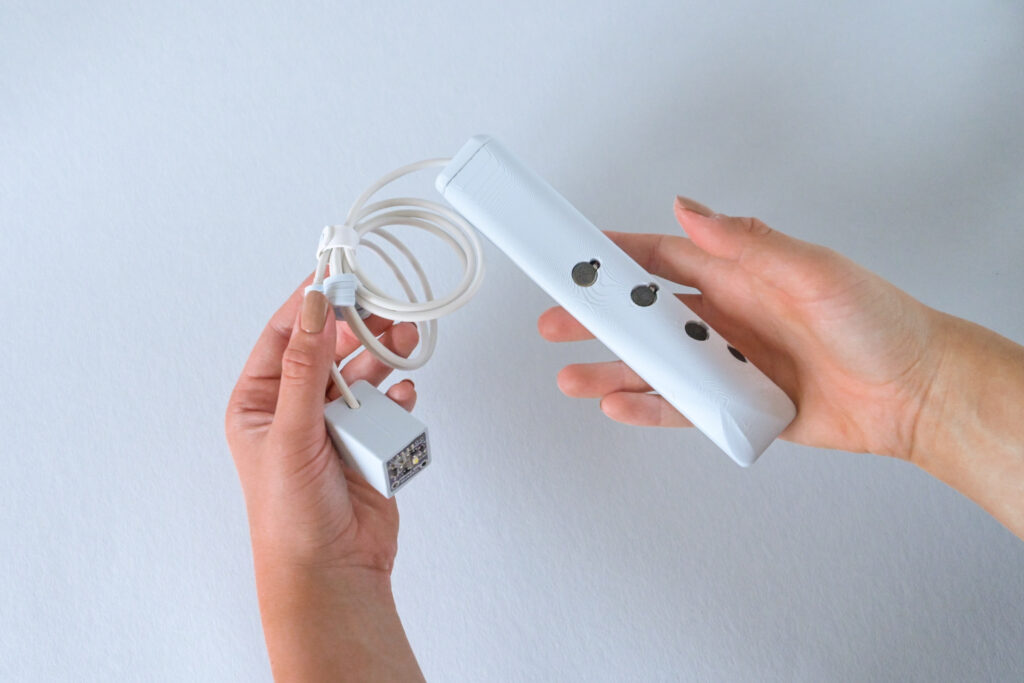
The sensor’s technology however could read more than the red and orange hues of most markings and seemed to have a possibly wider range of applications. Its ability to distinguish distinctly between red, green, blue and yellow led to a proposition to improve accessibility in Berlin’s public transport system. Each glued tape line on the ground would have a color connected to a specific service, creating a simple color code based on existing logos or vehicle associations. Once a color is recognised, it activates the corresponding motor and the user can differntiate between the four triggers by the placement of their fingers.
Color coded ground lines could not only enable the b./v.i. to navigate through Berlin’s public transit more easily, independently and efficiently but also prove useful to citizens and tourists.

visualisation / video documentary coming soon
